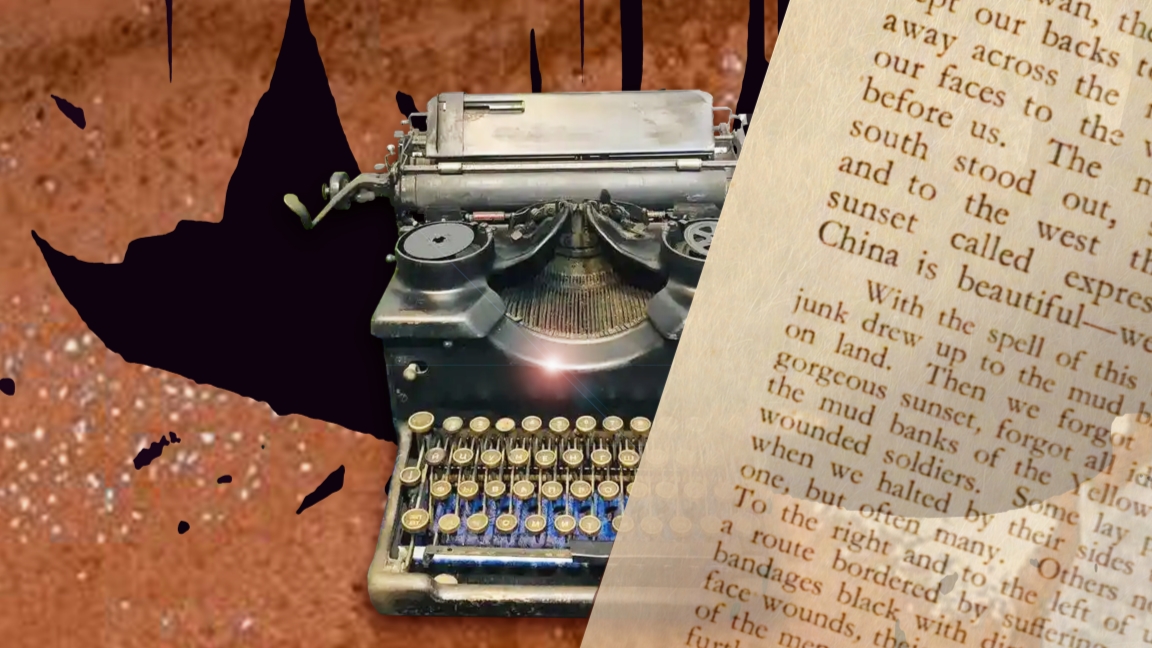
A trailer for the five-part documentary series "Dispatches from the East."
"Dispatches from the East," a compelling five-part documentary series, sheds new light on the immense contributions of the Chinese people during the World Anti-Fascist War, from the perspectives of foreign journalists.
Beginning from August 29, the series will start to air on multiple platforms, including iSMG, DocuLife and ShanghaiEye.
It follows five foreign correspondents – Edgar Snow, Agnes Smedley, John B Powell, Jack Belden and Harrison Forman – who not only witnessed but also courageously chronicled Chinese People's War of Resistance Against Japanese Aggression (1931-45).
From the vibrant streets of Shanghai to the battlefields across the country, these intrepid journalists risked their lives to tell the world the story of a nation under siege. Through their words and images, they shaped global understanding of China's resilience, sacrifice and unwavering commitment to survival. In their eyes, the war became not just China's fight for existence, but a universal struggle for truth and justice.
The series arrives just in time to commemorate the 80th anniversary of the victory in the war against Japanese invasion and the World Anti-Fascist War.
A joint production by the Information Office of Shanghai Municipality and Shanghai Media Group's DocuChina, "Dispatches from the East" is a tribute to the heroism, courage and solidarity of the Chinese people. It offers the world a glimpse into the extraordinary sacrifices made during a defining moment in history.
The documentary is hosted and narrated by Dr Andrew Field, an American historian and professor at Duke Kunshan University. Field is widely respected for his extensive research on modern Chinese history.

American historian Andrew Field is the documentary series' host and narrator.

Four years ago, Field took viewers on a journey through the liberation of Shanghai, breathing life into the city's historic landmarks and unveiling their rich, wartime significance.
Now, he returns in a similar narrative style, leading audiences on a journey across Shanghai to retrace the legendary stories of the foreign correspondents, who bore witness to China's battle for survival.
The series is based on an array of valuable English-language historical materials, including prominent publications like The New York Times, The Manchester Guardian, The New York Sun and Time, alongside firsthand accounts from newspapers and periodicals like Millard's Review and the Shanghai Evening Post and Mercury, which circulated in Shanghai and across the globe during that time. These sources provide an exclusive, vivid account of the war, as documented by the foreign journalists reporting from the frontlines.
Each episode of the series, lasting 6 to 7 minutes, combines live-action footage with traditional computer graphics (CG) and cutting-edge artificial intelligence (AI) technology to recreate key war scenes as they were depicted by the journalists. It brings the audience an immersive historical experience that transcends time and space.
Chief director Wang Xiangtao noted that one of the main challenges was condensing vast historical events into such a concise format.
"Presenting a narrative spanning over 10 years in such a short time is no small feat," said Wang. "We have tried to strike a balance between brevity and impact, while ensuring that the correct historical perspective is emphasized to international audiences."
The full series will air at 10pm on Dragon TV on September 2, ahead of China's grand military parade at Beijing's Tian'anmen Square. The highly anticipated parade, on September 3, will feature impressive marching formations, armored columns, and aerial displays, showcasing China's latest advancements in combat forces, strategic systems and military intelligence.

The series combines live-action footage with traditional CG and cutting-edge AI technology to recreate key war scenes as they were depicted by the foreign journalists.

The series is based on an array of valuable English-language historical materials.
Episode 1 – From Six Weeks to Thirteen Years
Edgar Snow arrives in Shanghai in 1928 intending only a short stay, but war and upheaval change his course. From witnessing the 1932 battle against Japanese marines to slipping through Kuomintang blockades, Snow reaches Yan'an to meet Chairman Mao Zedong. His "Red Star Over China" reveals the Communist resistance to the world, making him the first Westerner to capture its significance.
Episode 2 – Hymn for the Unsung
Journalist Agnes Smedley finds a kindred spirit in renowned Chinese writer Lu Xun before plunging into the frontlines of war. Living among the Chinese resistance force, she records not just battles but the sacrifices of ordinary people. Her dispatches became a lasting tribute to the unsung heroes of China's struggle.
Episode 3 – The Unyielding Stand
Editor John B. Powell, long rooted in Shanghai, takes an uncompromising stand against Japanese aggression. From exposing atrocities after the 1931 invasion of China to witnessing the devastation of the 1937 Battle of Shanghai, Powell refuses to remain silent – even when it leads to imprisonment under the Japanese military police.
Episode 4 – Embedded in Reality
Jack Belden, a seaman-turned-journalist, immerses himself in Chinese life and language. On the war's frontlines, his vivid dispatches capture both resilience and determination. His daring journey to the New Fourth Army shows how guerrilla resistance reshaped the war, and his later "China Shakes the World" stands as a raw testament to revolution born in the crucible of resistance.
Episode 5 – More than Just Pictures
Harrison Forman's photographs and reports bring the world face to face with China's wartime ordeal. From bombed Shanghai streets to rare images of Yan'an, his lens documents both destruction and resilience. His "Report from Red China" gives Western readers one of their first authentic glimpses of the Communist resistance and its disciplined forces, leaving behind a visual legacy of a nation at war.


